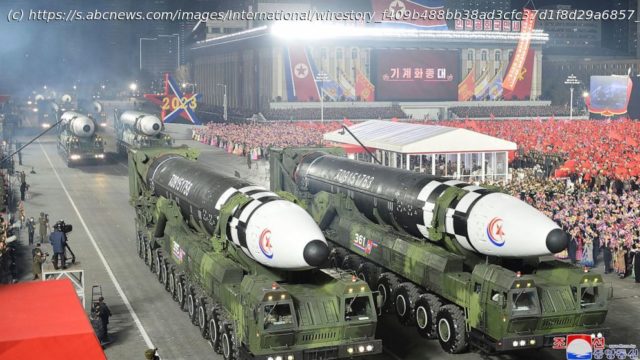Array
North Korea’s latest missile launches are a demonstration of the country’s avowed ability to use nuclear force against South Korea and the mainland U.S. How immediate is that threat?
North Korea claims its nuclear forces area capable of destroying its rivals, and often follows each of its provocative weapons tests with launch details. But many foreign experts call the North’s claim propaganda and suggest that the country is not yet capable of hitting the United States or its allies with a nuclear weapon.
There’s no question that North Korea has nuclear bombs, and that is has missiles that place the U.S. mainland, South Korea and Japan within striking distance. What’s not yet clear is whether the country has mastered the tricky engineering required to join the bombs and the missiles.
__
ICBMs
North Korea has demonstrated that it has missiles that could fly far enough to reach deep into the continental U.S., but it’s not clear whether they can survive re-entering the earth’s atmosphere on arrival.
North Korea said it had launched a Hwasong-15 inter-continental ballistic missile on Saturday to verify the weapon’s reliability and combat readiness of the country’s nuclear forces. It’s one of three kinds of ICBMs the country has developed, along with the Hwasong-14 and Hwasong-17. All three are all liquid-fueled, and North Korea has portrayed them all as nuclear-capable.
Launched almost straight up to avoid the territories of neighbors, the weapon reached a maximum altitude of about 5,770 kilometers (3,585 miles) and flew 990 kilometers (615 miles), according to North Korea’s state media. The reported flight details suggest the missile could travel 13,000 kilometers (8,080 miles) or beyond if launched on a normal trajectory.
“These days, North Korea has been disclosing details about its launches in a very detailed manner to try to let others believe what they’ve done is genuine,” analyst Shin Jong-woo at South Korea’s Defense and Security Forum said. “But I think that’s part of their propaganda.”
There are questions on whether North Korea has acquired the technology to shield warheads from the high-temperature, high-stress environment of atmospheric re-entry.
A South Korean biennial defense document released last week said that it’s not clear whether the missiles can survive re-entry, because all of North Korea’s ICBM tests have so far been made on high angles.
Lee Choon Geun, an honorary research fellow at South Korea’s Science and Technology Policy Institute, said a normal trajectory would cause greater stress, as a warhead would spend a longer time passing through altitudes of high air density.






